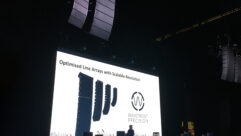Educated industry experts—systems integrators and AV professionals— who use and replace projector lamps on a daily basis have been deceived and burned by fakes before. These are the individuals who are most concerned with quality, since it reflects on their business and knowledge. Understanding the distinction between counterfeit and OEM is priority for this group.
Original vs. Aftermarket: The Breakdown
Many of us use the term “projection lamp” when we think about replacing a failed light source in a projector. This is just one name of many that are commonly used. The term we will use is “lamp assembly.”
The lamp assembly consists of the housing, reflector, burner, window/lens, plug, and necessary wiring. When selecting a replacement lamp assembly, online distributors use a number of deceiving descriptions: brand new, genuine, original parts, OEM spec lamps, or OEM lamps. None of these describe the lamp made by the projector manufacturer. While these websites technically don’t lie, they intentionally deceive. “OEM” should describe the lamp assembly made by the projector manufacturer, but it often only means any component made by the original manufacturer inside an aftermarket housing.
Burner
Contrary to claims, aftermarket burners are not made to the same specifications as original burners, and thus, do not produce the same amount of light, nor are they as lasting and safe.
The temperature of the burner reaches 1800 Fahrenheit on its surface, and the pressure inside the burner reaches greater than 200 atmospheres. This highly stressed part is the one that usually fails when a projector lamp has to be replaced. Over its life, the quartz glass used becomes dull (devitrifies) and light output diminishes. In the worst case, the glass gives in and the burner “explodes.”
Reflector
Aftermarket reflectors tend to use inferior glass that doesn’t withstand heat stress as well as the original reflectors, resulting in reduced integrity of the material. The surface coating reflects less light and might not eliminate as much ultraviolet (UV) and infrared light coming from the burner, exposing and potentially damaging the projector.
Some aftermarket lamp manufacturers use reflectors from different projector models that may have different vents and cool the burner inefficiently, resulting in diminished lamp life. We have also seen different shaped reflectors that do not produce the light output of the original lamp.
Window/Lens
Windows and lenses have special surface coatings to maximize light throughput. Aftermarket windows and lenses can have inferior coatings that diminish light output. Also, inferior materials can lead to damage and premature failure of the lamp, and may not contain the explosion of the burner.
Housing
The UV light emitted by the burner is a plastic killer, and aftermarket housings made out of inferior plastics can’t withstand the harsh environment; the high temperatures melt the plastic and the UV light makes the plastic brittle to the point where it breaks. Also, aftermarket housings are sometimes meant for different projector models that look the same but aren’t. In some cases, vents are different, altering the cooling of the burner and diminishing its life.
Wires and plugs, as unimportant as they seem, are also exposed to UV light and high heat and—if made of inferior material—can become brittle, leading to electric shorts and premature failure of the lamps.
If you have any questions about a lamp or to have us confirm if it may be counterfeit, feel free to send it to us, we will inspect it, and advise you accordingly.
Paul Gasteiger is the CEO of RelampIt, a manufacturer of OEM replacement video projector lamps. Visit RelampIt at www.relampit.com or email him at [email protected].










